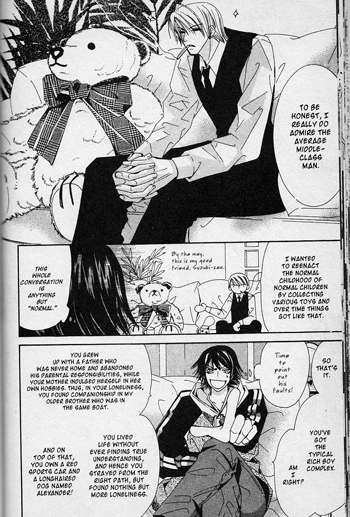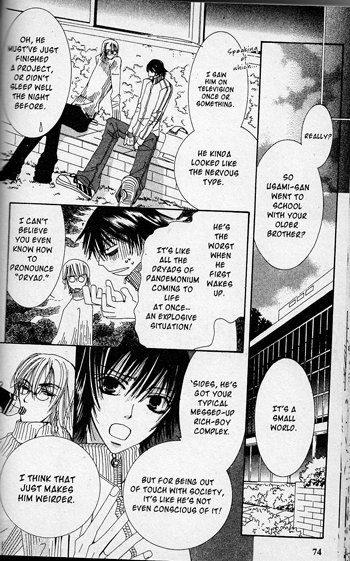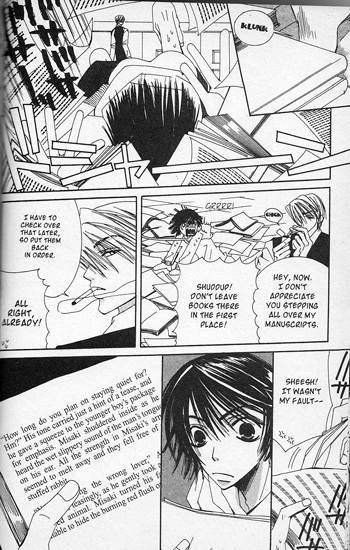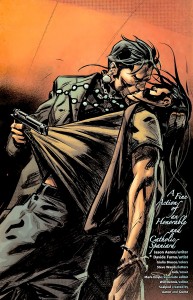R. Fiore has a recent article up about the South Park censorship brouhaha in which he takes a brave, world-weary stand against cowardly corporations, crazy Muslims, and simplistic theists. As always with Fiore, it’s stylishly written…and as sometimes with Fiore, it’s pretty thoroughly vapid. He’s got that just-plain-common-sense-man-on-the-street approach, which involves repeating things everyone already knows, retailing banal prejudices as shocking insights, and patting yourself rhythmically on the back all the while.
Fiore’s argument is basically that we’d all get along better in this old world if we acted as if we didn’t believe anything. Or as Fiore says, “What the West has learned is that even if you do sincerely believe in God, if you want any peace you can’t act that way.” For Fiore, the South Park incident shows the eminent reasonableness of the Western world, and the fact that reasonableness is essentially useless in dealing with nutzo Islamist thugs:
The Danish Jyllands-Posten, lulled into a false sense of security by a period of reason and good fellowship in Europe dating all the way back to 1945, published their suite of cartoons featuring Muhammad on the assumption that no one was crazy enough to sacrifice their lives and liberty or commit horrible crimes over a drawing. The response of the fanatical end of Islam was, in effect, yes as a matter of fact we are crazy enough, and if that wasn’t sufficient please let us know and we’ll be crazier still. The position this places the would-be blasphemer in is that you can visually depict Muhammad, but only if you’re willing to see blood shed over it. Courage will allow you to express yourself, but it won’t prevent the violence. The net result is that the fanatics get their way and the only cost is to brand millions of completely innocent Muslims as murderous barbarians.
I think my favorite part of that quote is the nostalgic harking back to “a period of reason and good fellowship in Europe”, coupled with Fiore’s utter lack of historical or intellectual curiosity. Presuming that this period of reason and good fellowship did exist for a moment — why did it end, precisely? What caused the Muslims to suddenly jump the shark? Is it immigration into Europe that’s the problem — which would lead to certain policy positions that I strongly suspect the carefully enlightened Fiore wants nothing to do with.
Or…as an alternate possibility, could it be that, from the Muslim perspective, there was in fact no “period of reason and good fellowship,” but rather decade upon decade of Western-supported dictatorships, quasi-imperialism, repetitive humiliations, and (in the case of Afghanistan, at least) vicious, unending warfare? Fiore muses with an air of non-plussed good humor at what could have possibly led some Muslims to set themselves against South Park so:
The Mafia is an appropriate comparison because the threats made against South Park are in some ways more akin to extortion than conventional terrorism. A typical terrorist campaign attempts to achieve an absurdly ambitious goal with an absurdly miniscule amount of force. For example, in 40 years of terrorism after 1967, Palestinian terrorists managed to kill something like 2100 Israelis. No one is going to surrender their country to avoid this level of casualties. A modern army can kill that many non-combatants in an afternoon by mistake. The campaign against depictions of the prophet Muhammad on the other hand brings to bear an absurdly disproportionate amount of force to stop something most people in the West don’t have the inclination to do in the first place.
The Mafia analogy carefully obscures the clear conclusion — Muslims have little if any way to address their political grievances to the foreign powers that repetitively kick them in the teeth. Terrorism is largely, as Fiore quite rightly notes, useless. So when you can’t do anything about the big insults, you naturally focus on the small ones. Surely segments of the Muslim world sees depictions of the prophet by the infidels not as the first insult, or the fifth or the 200th, but rather as part of one, long, sustained insult by a bully who has kept his foot on their throat for half a century plus.
Threats against newspaper publishers or television networks are petty and stupid and despicable, obviously — but they’re neither incomprehensible nor evidence of some sort of disconnect between religious thinking and rationality. Given the relationship between the west and the Middle East, the threats are, on the contrary, entirely comprehensible. That doesn’t mean that they should be condoned. In the first place, as Fiore points out, the whole brouhaha definitely makes things worse, not better, for Muslims worldwide. Moreover, while it isn’t as bad as the Taliban’s systematic oppression of women or al Qaeda’s terrorist attacks, threatening to kill innocents for drawing pictures does seem to me to be a fair definition of evil. Still, we can take comfort in the thought that we’ll go tit for tat or better in the near future, whenever the next American drone strike takes out the next Afghani wedding party.
Fiore’s a lefty too, and I doubt he supports the Afghan war any more than I do. But he doesn’t want to talk about it in too much detail because to do so would mess up his nice little binary; rational west as powerless, peaceful victims; nutty religious dickheads as powerful, violent thugs. To give Fiore his due, though, he is willing to follow his simplistic analogy wherever it takes him, no matter how idiotic the end location is. And so in the last paragraph we get this gem:
What the West has learned is that even if you do sincerely believe in God, if you want any peace you can’t act that way. After all, if you truly believed that those who follow the wrong religion will be subjected to eternal torment then you’re doing them no favors by allowing them to do so. For instance, during the Cold War, if you believed as Jesus told you that death is an illusion, and the atheistic regimes of the Soviet bloc were depriving millions of even opportunity to save their souls from eternal damnation, then you would be honor bound to not only risk nuclear war but to engage in it. After all, eternal bliss would compensate the just for any suffering they endured.
To call this a strawman argument is to cast scurrilous aspersions on the structural integrity of straw. Which Christians exactly is it who want to start a worldwide nuclear holocaust for the sake of the souls of atheists? Would that be the many Christians who, on quite good scriptural authority, believe that Jesus enjoined them to pacifism? Would it be the Catholic Church — still the largest Christian denomination — which holds to a just war doctrine that declared the Iraq war anathema? The Niebuhrian realist tradition, which stresses a humane concern for human life and justice? Hell, even wacko Protestant Christian right-wing apocalyptic fantasies like the Left Behind series doesn’t advocate genocide-for-Jesus as far as I know.
There are nutcases everywhere, obviously, and I’m sure there’s the random Christian out there who wants everyone to die in a fiery man-made holocaust — but to suggest that this is especially a hallmark of religious thinking as opposed to the rational atheist philosophies of, say, Pol Pot or Mao or Hitler…it’s nonsense on its face. And that’s to say nothing of our own lovely, rational, harmless, hapless capitalism, which can’t stand up for South Park, but which has, nonetheless, shown itself capable on occasion of a certain ruthlessness, as Chileans, Cambodians, and, for that matter, Native Americans would no doubt be willing to attest.
“What the West has learned is that even if you do sincerely believe in God, if you want any peace you can’t act that way.” I’ve quoted that twice already, and I’m quoting it a third time because it’s central to Fiore’s argument — and, I believe, to his belief. Because it is a belief, right? It’s certainly not a fact. Where, after all, is this peace we’ve found by acting as if we don’t believe in God, precisely? The U.S. is more religious than Europe, certainly, but by world-historical standards we’re a pretty secular society — and, by world-historical standards, we have probably the biggest military of all time. China’s fond of playing with weapons too, and they aren’t noticeably religious last time I checked. And, you know, on the other side, I was under the impression that Martin Luther King, Jr. and Gandhi both drew the inspiration for their non-violent resistance movements from their faith. Or does Fiore think that MLK was somehow acting as if he didn’t believe in God?
Fiore ends with a really tiresome roulette wheel analogy which I don’t have the heart to quote. But it’s telling that such vacuous modernity can only end by seeing faith in terms of gambling, money, and yes, capitalism. Fiore believes that believing in nothing will save him…but the truth is that nothing has its own rites and rituals, its own insanities, its own cruelties, and even its own genocidal impulses. The world isn’t divided into believers and non-believers, or into the sane and the insane. The only ones here are us chickens — or, if you prefer, us poor sinners, a long way from home.
_________
Update: R.Fiore has an extremely long response here.
And my short reply to Fiore is here.







